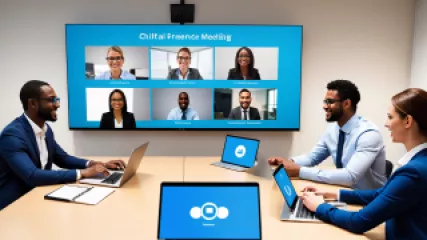10 Best Practices for Effective Remote Conflict Resolution Sessions
In today's increasingly digital world, remote conflict resolution sessions have become an essential tool for managing disputes effectively. Whether you're dealing with workplace disagreements, family conflicts, or community issues, the ability to navigate these conversations remotely is invaluable.
This article outlines the top ten best practices for effective remote conflict resolution sessions. These practices are designed to help you manage conflicts efficiently and with a high degree of professionalism, ensuring that all parties feel heard and respected.
1. Establish Clear Communication Protocols
One of the most crucial elements of effective conflict resolution coaching is establishing clear communication protocols from the outset. This includes setting guidelines for how parties will interact during the session and what mediums (video calls, emails, chat) will be used.
- Set Expectations: Inform all parties about the rules and expectations for the session.
- Choose the Right Tools: Use reliable communication platforms that everyone is comfortable with.
- Clarify Roles: Make sure everyone knows their role in the conversation.
By laying out these protocols, you can minimize misunderstandings and keep the session focused and productive.
2. Create a Safe and Neutral Environment
For remote conflict resolution sessions to be effective, creating a safe and neutral environment is essential. This helps ensure that all parties feel comfortable expressing their views without fear of judgment or retaliation.
- Confidentiality: Emphasize the importance of confidentiality in your sessions.
- Neutral Facilitator: Consider having a neutral third-party facilitator to guide the discussion.
- Respectful Interaction: Encourage respectful and open dialogue among participants.
This approach not only fosters trust but also promotes a more honest and open exchange of ideas.
3. Utilize Expert Conflict Management Guidance
Engaging an expert in conflict management can significantly enhance the effectiveness of your remote sessions. Their expertise can provide valuable insights into the dynamics of the conflict and suggest strategies for resolving it.
- Professional Mediators: Hire professional mediators who specialize in remote conflict resolution sessions.
- Training Programs: Participate in training programs to improve your own conflict resolution skills.
- Consultation: Seek consultation from experts to tailor your approach to specific conflicts.
With expert guidance, you can navigate even the most complex conflicts with greater ease and confidence.
4. Foster Active Listening and Empathy
Active listening and empathy are cornerstones of effective conflict resolution counseling online. They help build understanding and rapport between conflicting parties, allowing for more constructive conversations.
- Listen Actively: Pay attention to what the other person is saying without interrupting.
- Show Empathy: Acknowledge the emotions and perspectives of others.
- Reflect Back: Paraphrase what you've heard to show that you understand.
By fostering these skills, you can create a more supportive and collaborative environment for resolving conflicts.
5. Set Clear Goals and Objectives
Having clear goals and objectives for your remote conflict resolution sessions can help keep the discussion focused and productive. This ensures that everyone knows what they are working towards and can measure progress effectively.
- Define Goals: Clearly outline the goals of the session at the beginning.
- Set Milestones: Break down larger goals into smaller, achievable milestones.
- Review Progress: Regularly review progress towards the goals during the session.
Clear goals and objectives provide direction and purpose, making it easier to achieve a resolution.
6. Leverage Technology Effectively
Technology plays a crucial role in facilitating remote conflict resolution sessions. However, it's important to use it effectively to avoid technical difficulties that could disrupt the conversation.
- Reliable Platforms: Choose reliable platforms with robust features for video conferencing and document sharing.
- Technical Support: Have technical support available to troubleshoot any issues that arise.
- Backup Plans: Develop backup plans in case of technical failures.
By leveraging technology effectively, you can ensure smooth and uninterrupted sessions.
7. Encourage Participation and Inclusivity
Encouraging participation and inclusivity is vital for effective conflict resolution. It's important to make sure that everyone has an opportunity to speak and that diverse perspectives are considered.
- Round-Robin Format: Use a round-robin format to give everyone a chance to speak.
- Inclusive Language: Use inclusive language to make everyone feel welcome.
- Address Biases: Be aware of and address any biases that may affect the discussion.
This approach helps ensure that all voices are heard and valued, leading to more comprehensive and equitable resolutions.
8. Maintain Flexibility and Adaptability
Conflicts can be unpredictable, so it's important to maintain flexibility and adaptability during remote conflict resolution sessions. This allows you to respond effectively to changing dynamics and unforeseen challenges.
- Adapt Strategies: Be prepared to adapt your strategies as the situation evolves.
- Stay Open-Minded: Keep an open mind and be willing to consider new perspectives.
- Adjust Timelines: Be flexible with timelines if more time is needed to reach a resolution.
By staying flexible and adaptable, you can navigate conflicts more effectively and find solutions that work for everyone involved.
9. Provide Follow-Up and Support
Effective conflict resolution doesn't end when the session is over. Providing follow-up and support is crucial to ensure that the agreements reached are implemented and that any lingering issues are addressed.
- Follow-Up Meetings: Schedule follow-up meetings to review progress and address any ongoing concerns.
- Support Resources: Provide access to additional support resources, such as counseling or mediation services.
- Feedback Mechanism: Establish a feedback mechanism to gather input from participants on the effectiveness of the resolution process.
This ongoing support helps reinforce the resolution and prevent future conflicts.
10. Evaluate and Reflect on the Process
Finally, it's important to evaluate and reflect on the conflict resolution process to identify areas for improvement. This helps you refine your approach and enhance your skills for future sessions.
- Self-Reflection: Reflect on your own performance and identify areas for growth.
- Participant Feedback: Gather feedback from participants to understand their perspectives on the process.
- Continuous Improvement: Use the insights gained to continuously improve your conflict resolution strategies.
By committing to evaluation and reflection, you can become more effective in managing conflicts and facilitating successful resolutions.
In conclusion, effective remote conflict resolution sessions require a combination of clear communication, expert guidance, empathy, and flexibility. By following these best practices, you can navigate conflicts more successfully and foster positive outcomes for all parties involved.
Whether you're an experienced mediator or new to the field, these practices will help you enhance your skills and conduct more effective remote conflict resolution sessions. Remember, the goal is to create a safe and supportive environment where all voices are heard, and lasting resolutions can be achieved.
Conflict resolution is an ongoing journey, and continuous learning and adaptation are key to success. Keep refining your approach, seeking feedback, and staying open to new techniques and strategies. With dedication and commitment, you can become a more effective conflict resolver and make a positive impact in the lives of those you work with.
We hope this article has provided valuable insights and practical tips for managing remote conflict resolution sessions. Implement these best practices in your next session and witness the positive difference they can make.






